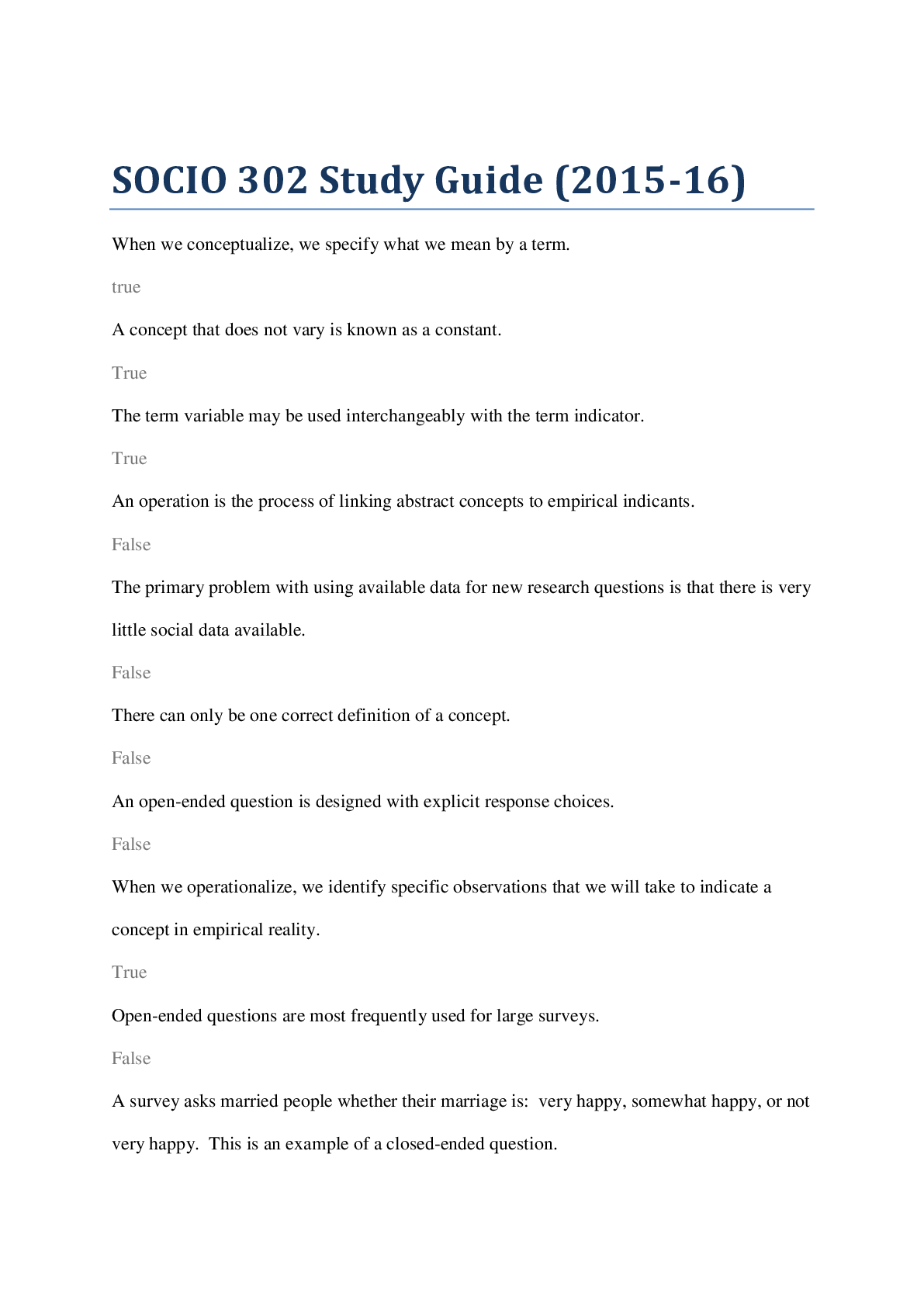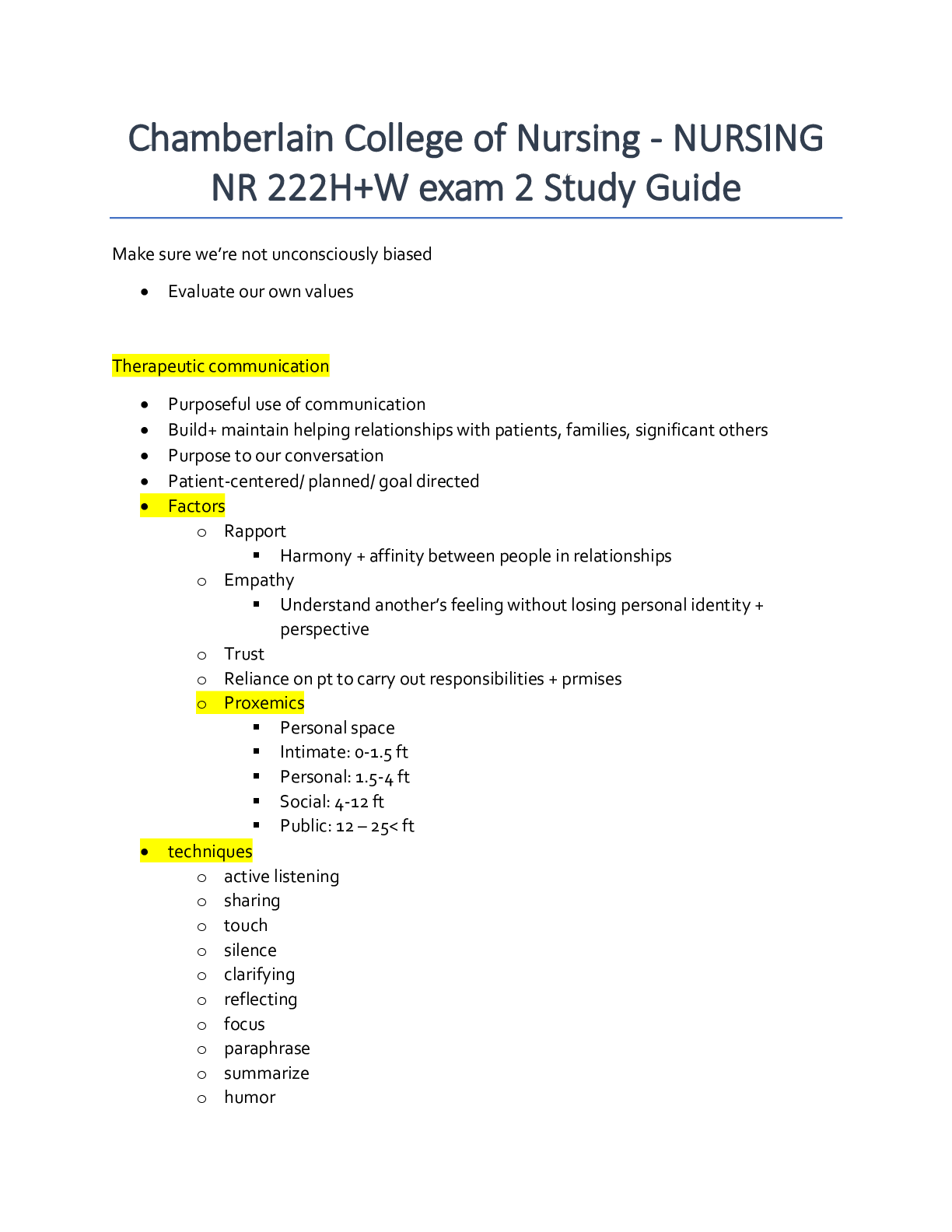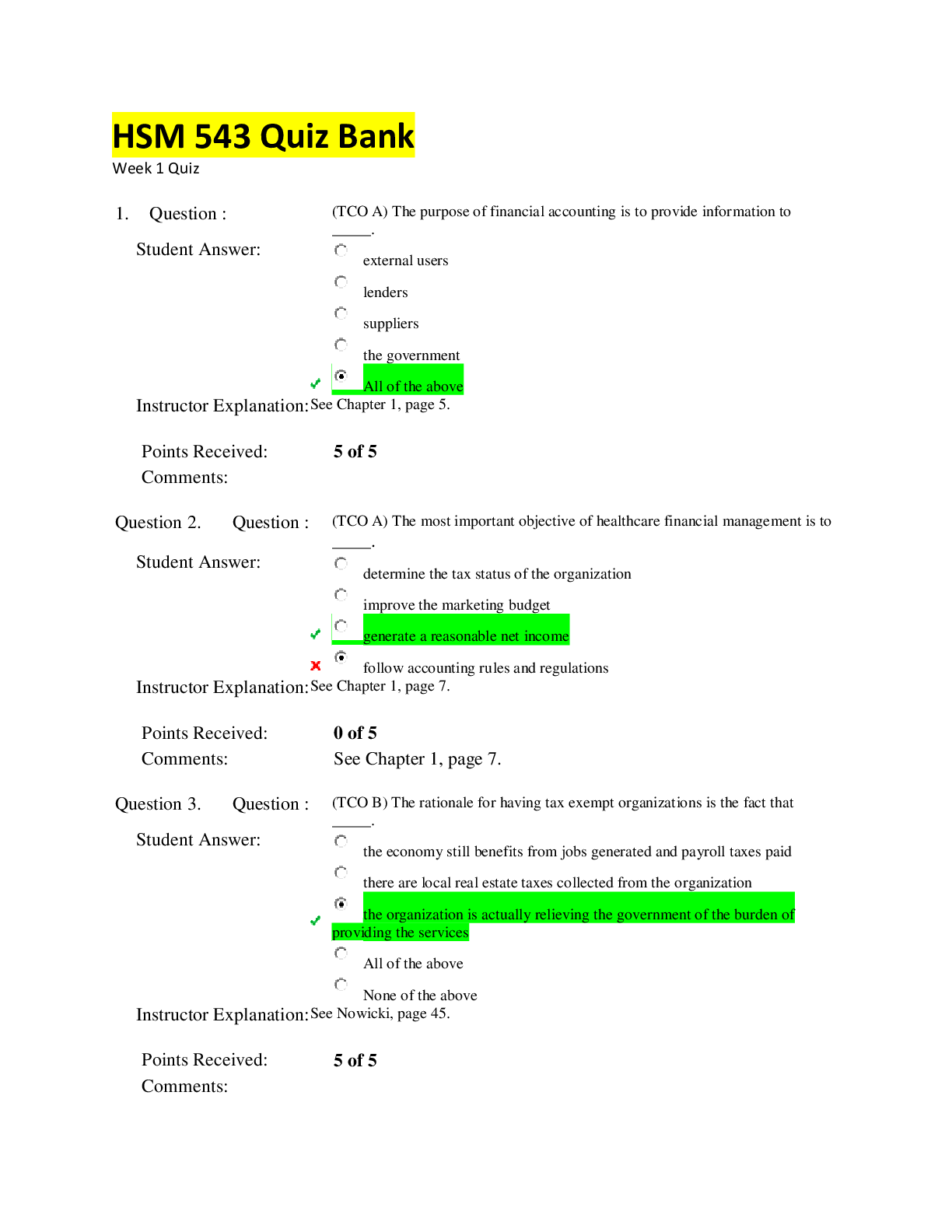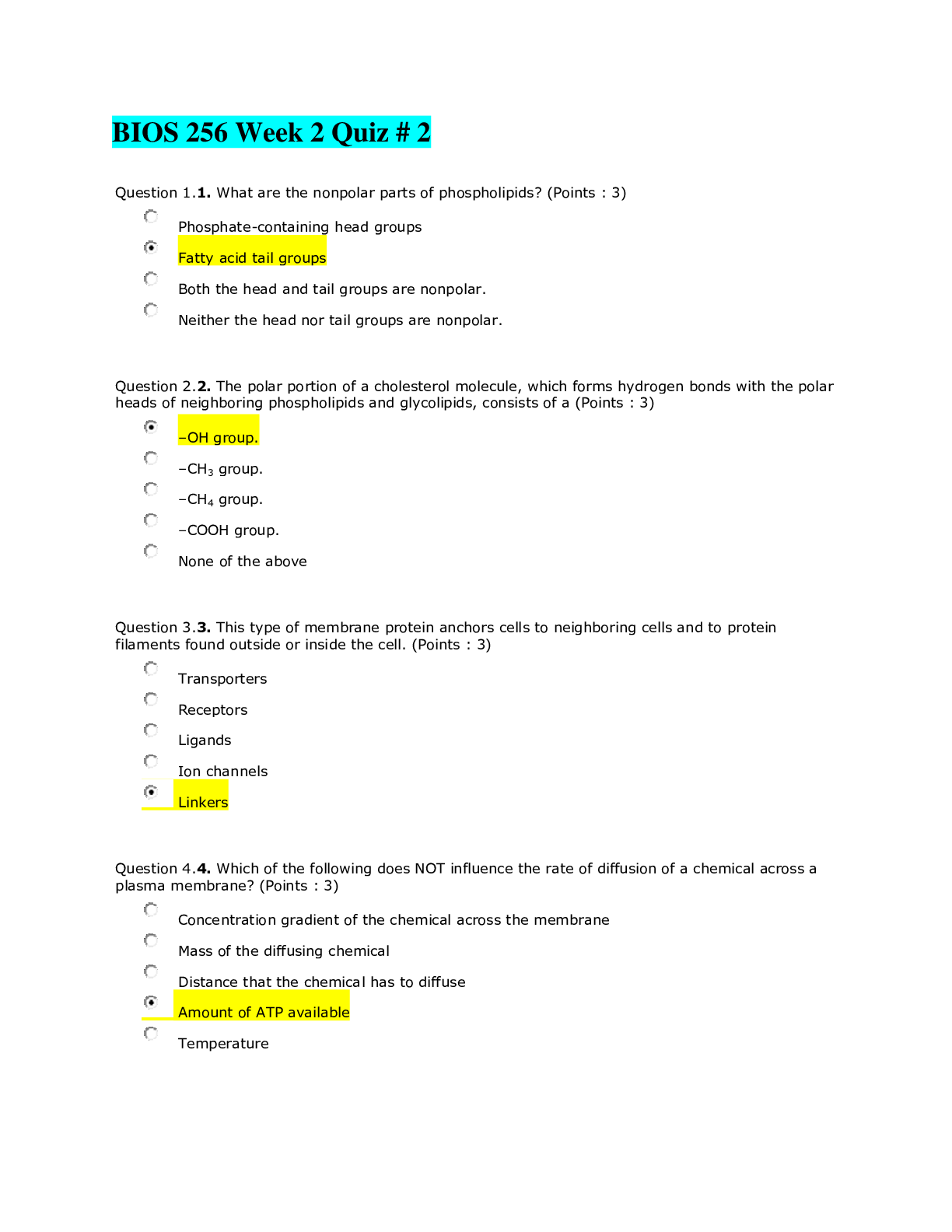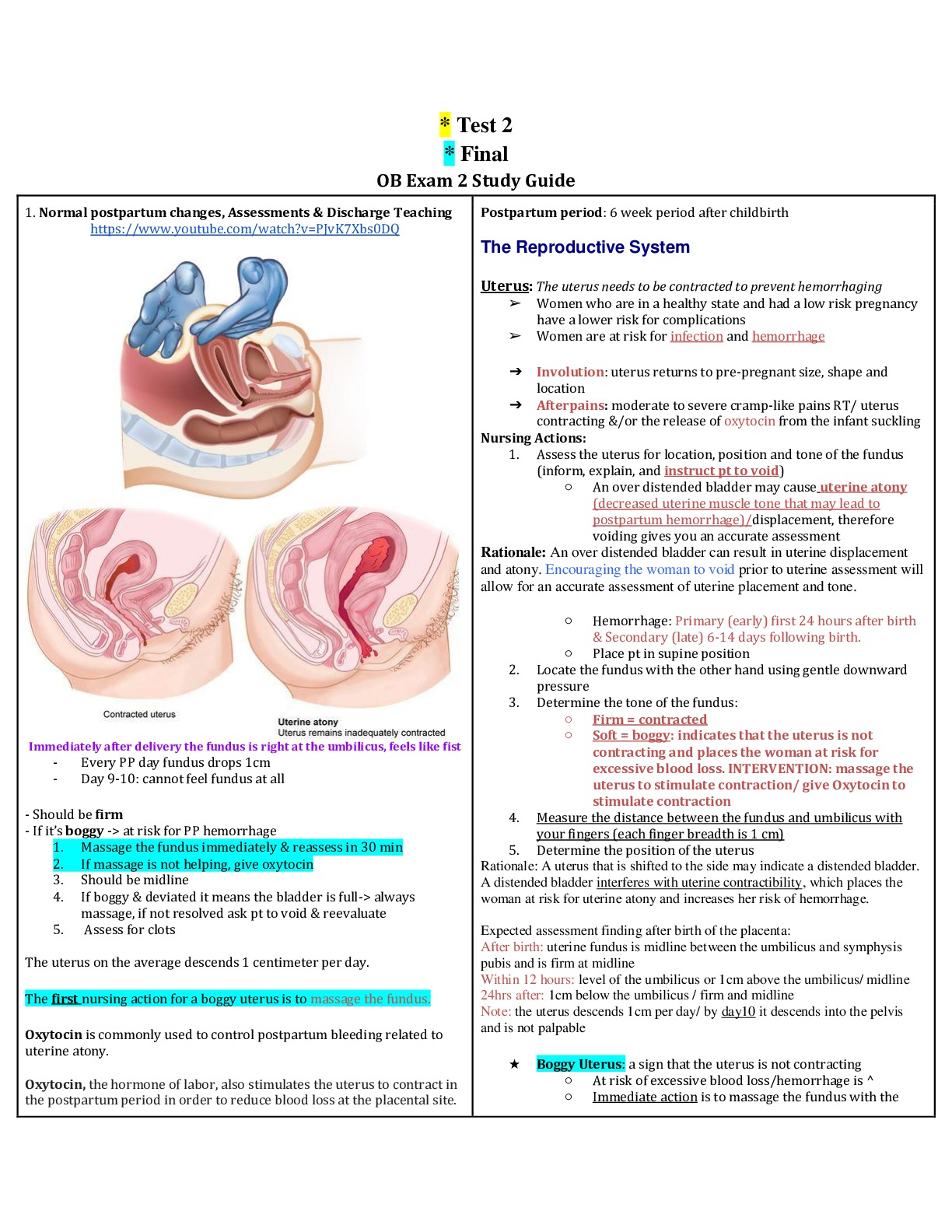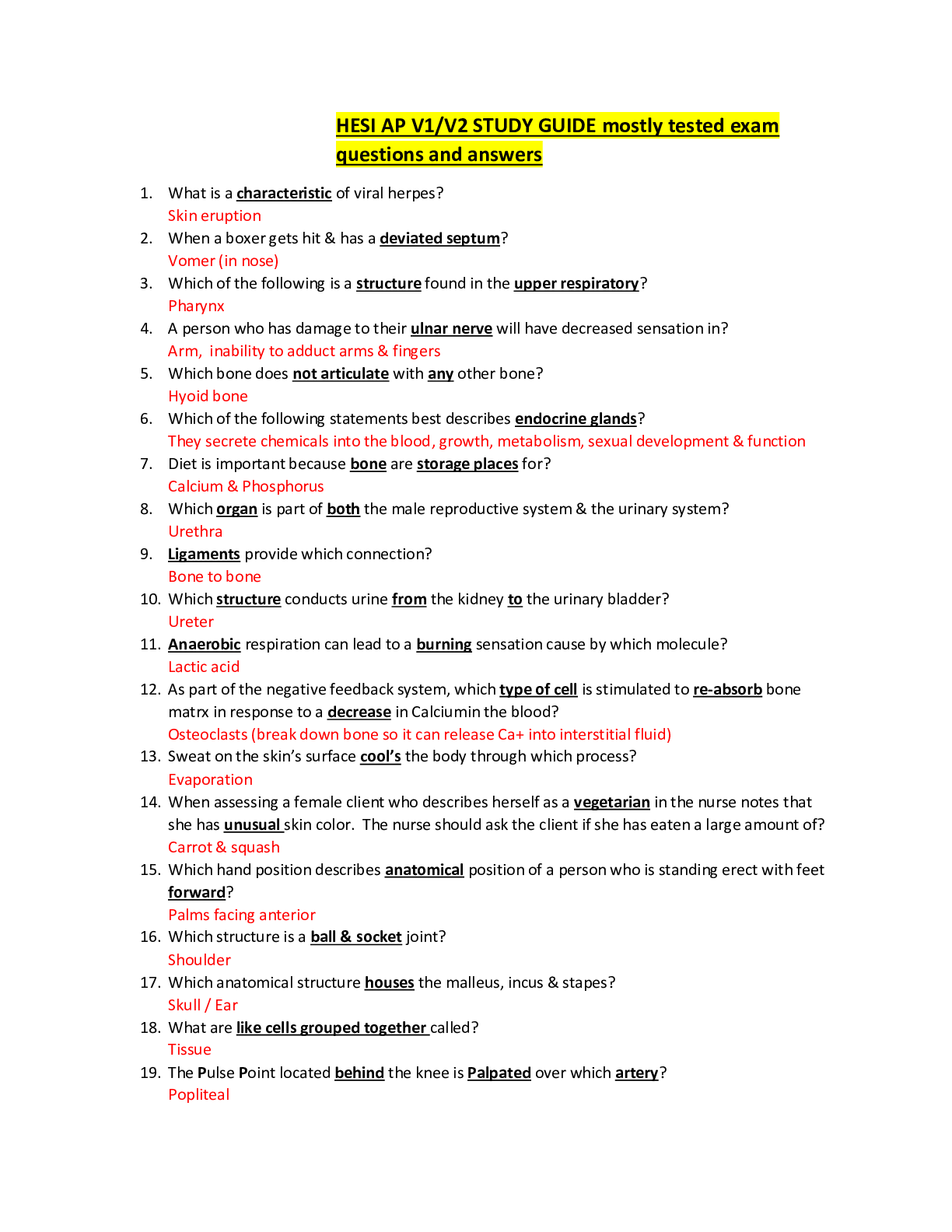*NURSING > QUESTIONS & ANSWERS > N3354 Exam 2 Study Guide / NR 442 - Complete solution Guide (2019/2020). (All)
N3354 Exam 2 Study Guide / NR 442 - Complete solution Guide (2019/2020).
Document Content and Description Below
N3354 Exam 2 Study Guide This exam contains 53 questions. Questions are either multiple choice or select all that apply. 1. Define epidemiology and give examples of how nurses use epidemiology. 2... . Define, understand the calculation of, and give examples of the following measures of morbidity and mortality: 3. Define and give examples of the levels of prevention. 4. Outline the ways in which the levels of prevention provide a framework for implementing public health programs. 5. Define and give examples of screening tests. Describe how the following measures can increase or decrease the usefulness of a given screening test: 6. Give specific examples of situations in which reliability and validity can be less accurate, and how to compensate for that decreased accuracy. 7. Compare and contrast descriptive vs. analytic epidemiology. 8. Identify and give examples of analytic epidemiological methods such as: . 9. Explain and give examples of the following concepts: 10. Explain how the strength of research evidence is graded. 11. Give examples of Category I, II, III and IV scientific evidence. 12. Understand and give examples of how (and how not) to apply evidence based practice in the community setting. 13. Define and apply the steps in the evidence based practice process. 14. What is a PICOT question? 15. Understand which factors will lead to the adoption of evidence based practice, and which can be barriers to the adoption of evidence based practice. Factors leading to the barriers of the adoption of EBP: 16. Identify situations in which evidence based practice is likely to be adopted, and situations in which practice is unlikely to change. 17. Identify and apply the skills of an effective educator. 18. Describe and give examples of educator related barriers to education, and learner related barriers to education. Specifically understand: (pg 198 - 200) 1. whether they think they can both manage the barriers and actually perform action a. Transtheoretical Model (TTM)= deals with change that occurs in stages and over time and has 6 stages: (COOKING SAMPLE) b. Precaution Adoption Process Model (PAPM)= deals with change that occurs in stages 19. Describe how an educator can evaluate the educational process. (pg 200) 20. Discuss group purpose, process and function. (pg 202) 21. How can groups be utilized in the process of health education. 22. Discuss the interaction between the health of the individual and the health of the community. How can the community be both a nurse’s client and partner? (pg 213) 23. Understand and apply the dimensions of community health: 215 - 216 24. Understand in detail the Community Focused Nursing Process 25. Demonstrate how to correctly develop goals and objectives for identified priorities. 224 26. Compare and contrast the role of the nurse as a change agent and as a change partner. 226 27. Describe the role of the case manager. 28. Identify the knowledge and skills nurses must master in order to fulfill the role of case manager. 29. Define the following case manager roles, and give examples of how the case manager can act as 30. Define each of the following roles, and describe how each is essential for case managers: a. Advocacy: Nursing is the protection, promotion & optimization of health & abilities, prevention of illness & injury, alleviation of suffering through the diagnosis & treatment of human response, and advocacy in the care of individuals, families, communities & population. 31. Compare and contrast the general areas of legal liability (or risk) for case managers. Identify strategies case managers can utilize to reduce their exposure to liability. 263 As in any scope of nursing practice, proactive risk-management strategies can lower the provider’s exposure to legal liability. Elements that reduce risk exposure: 32. Describe types of disasters and evaluate the effects of disasters on people and their communities. 33. Describe the disaster management phases of prevent, preparedness, response, and recovery and explain the nurse’s role in each phase. 34. Apply levels of prevention to disaster management. 35. Define public health surveillance and identify the nurse’s role in that process. 36. Describe the core competencies a nurse must have in order to participate effectively in surveillance and investigation activities. 37. Compare and contrast the types of surveillance systems utilized to protect the public’s health. 38. Outline the process of outbreak investigation. 39. Compare the program management process with the nursing process. 40. Identify the benefits of program planning. 41. Describe program evaluation and how the process of program evaluation is conducted. 42. Compare and contrast barriers to the delivery of quality care in the United States. 43. Describe who has a vested interest in the quality of care provided in the US, and why that interest exists? 44. Differentiate between quality assurance and continuous quality improvement. 45. Define Total Quality Management and Continuous Quality Improvement. Identify the goal of utilizing these programs. 46. Compare and contrast general and specific approaches to Quality Improvement. [Show More]
Last updated: 1 year ago
Preview 1 out of 23 pages
Instant download

Buy this document to get the full access instantly
Instant Download Access after purchase
Add to cartInstant download
Reviews( 0 )
Document information
Connected school, study & course
About the document
Uploaded On
Apr 04, 2020
Number of pages
23
Written in
Additional information
This document has been written for:
Uploaded
Apr 04, 2020
Downloads
0
Views
53

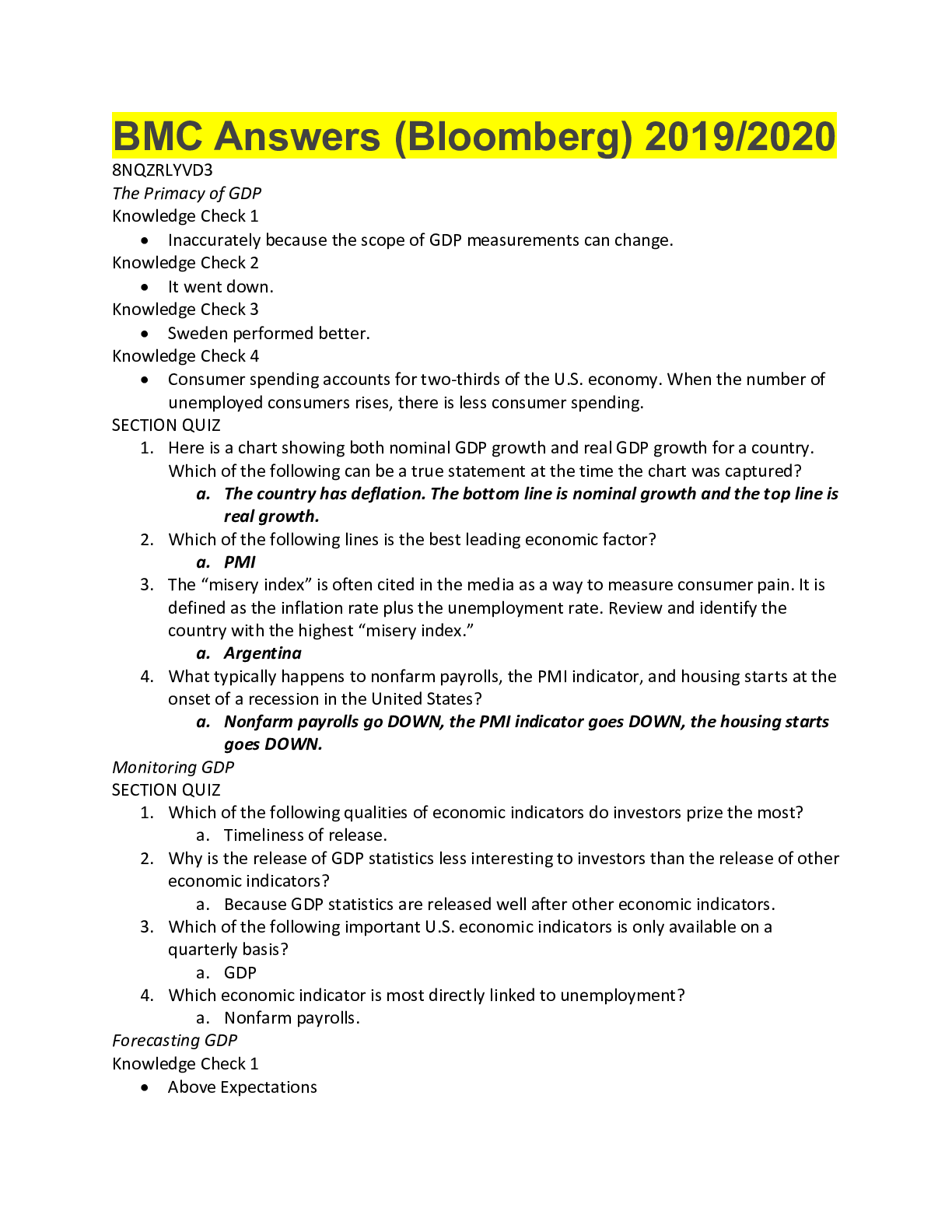
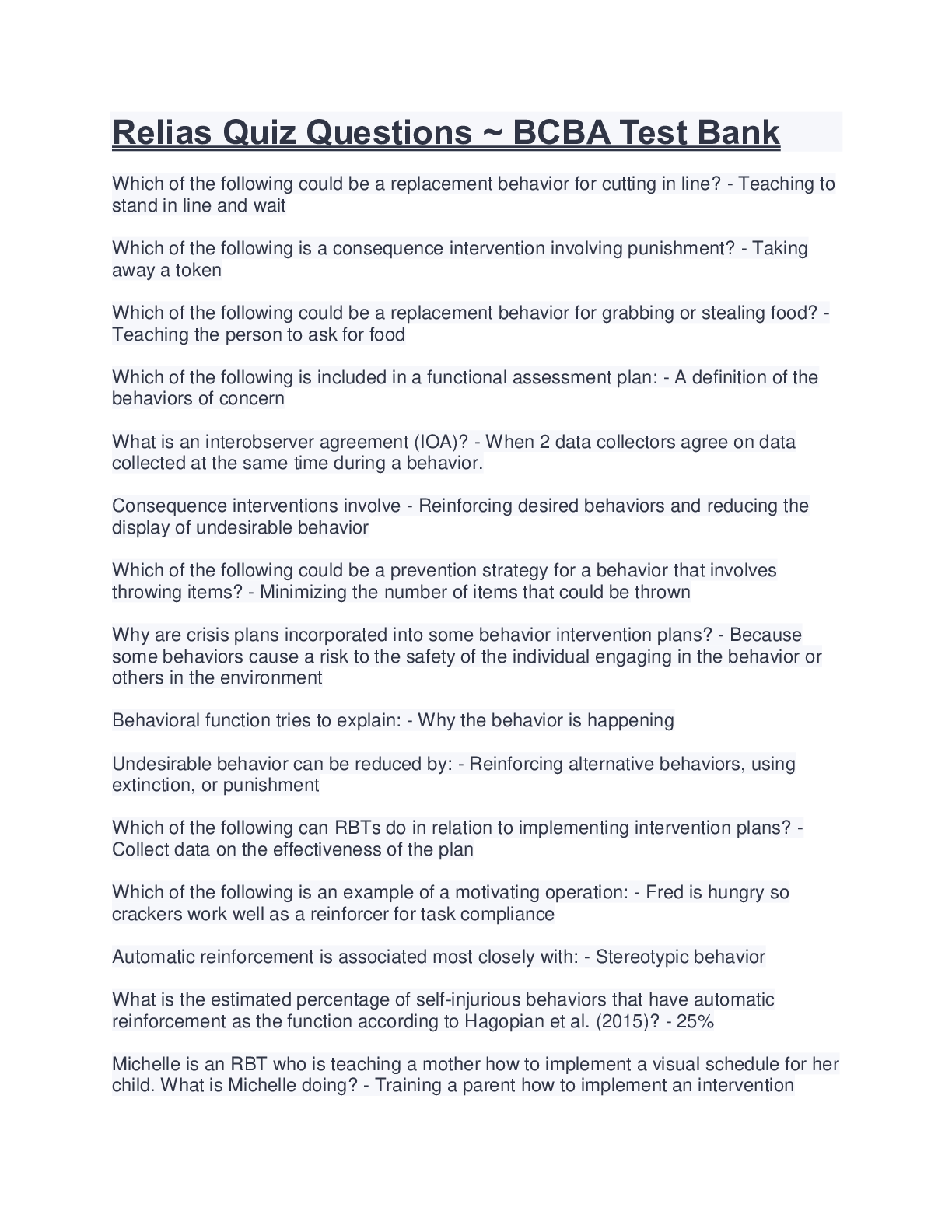
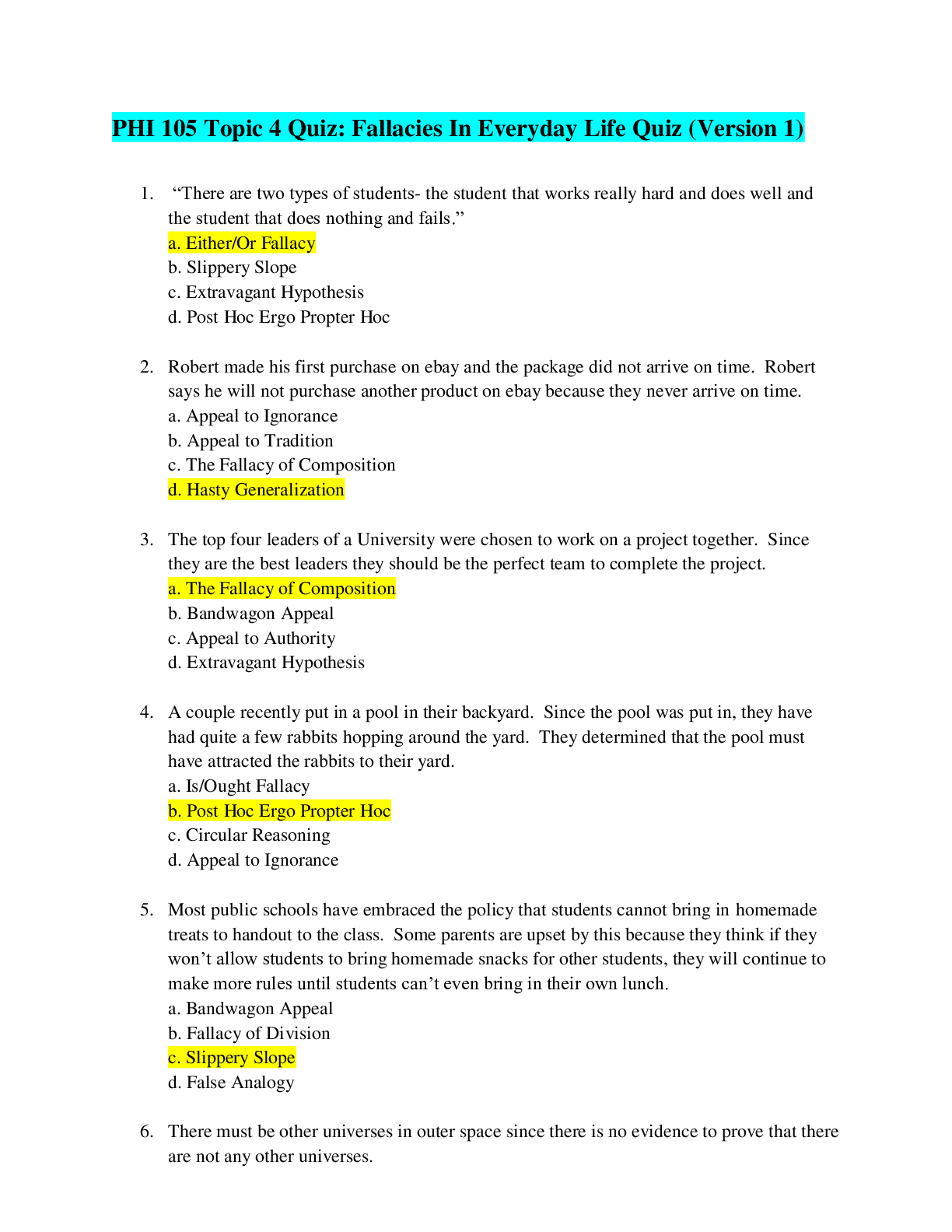


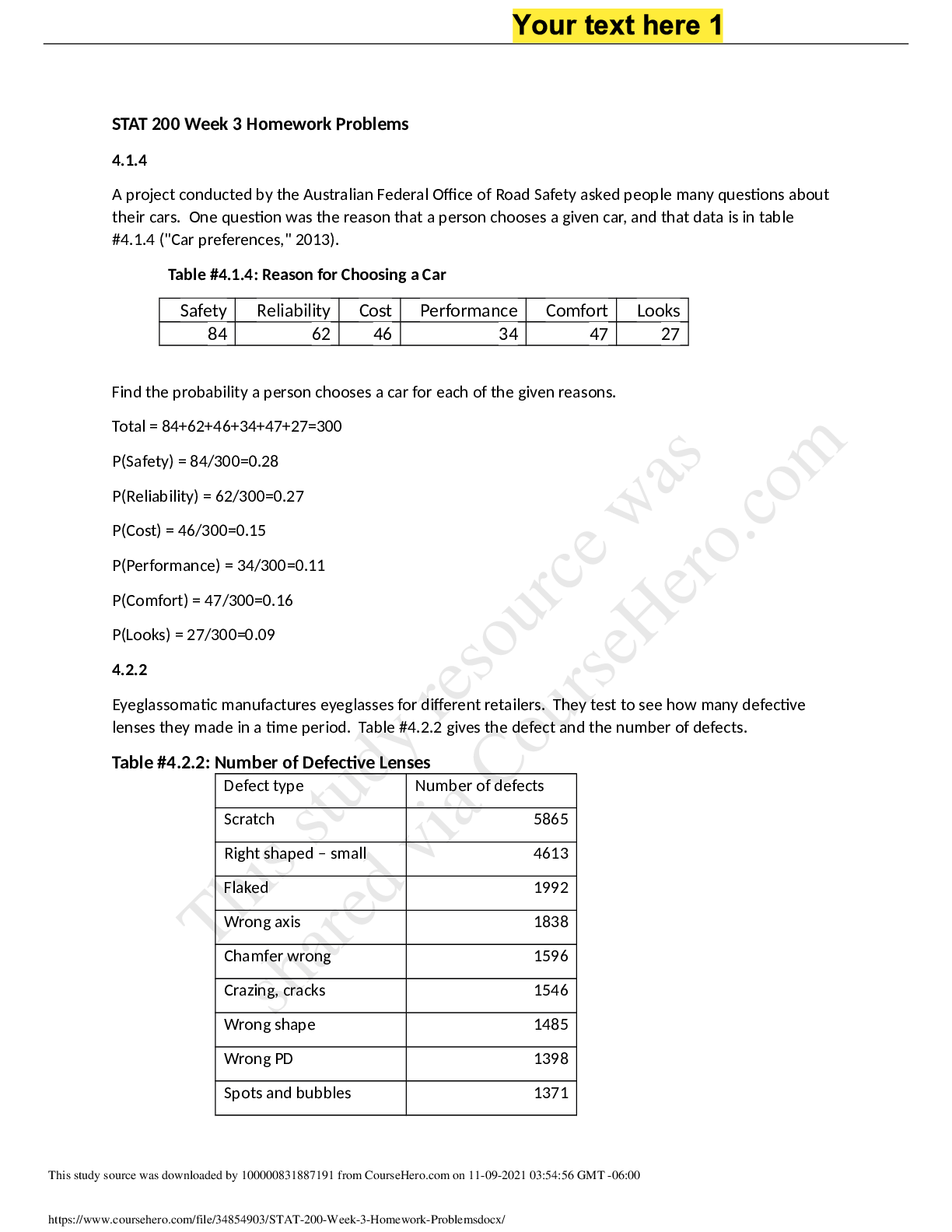

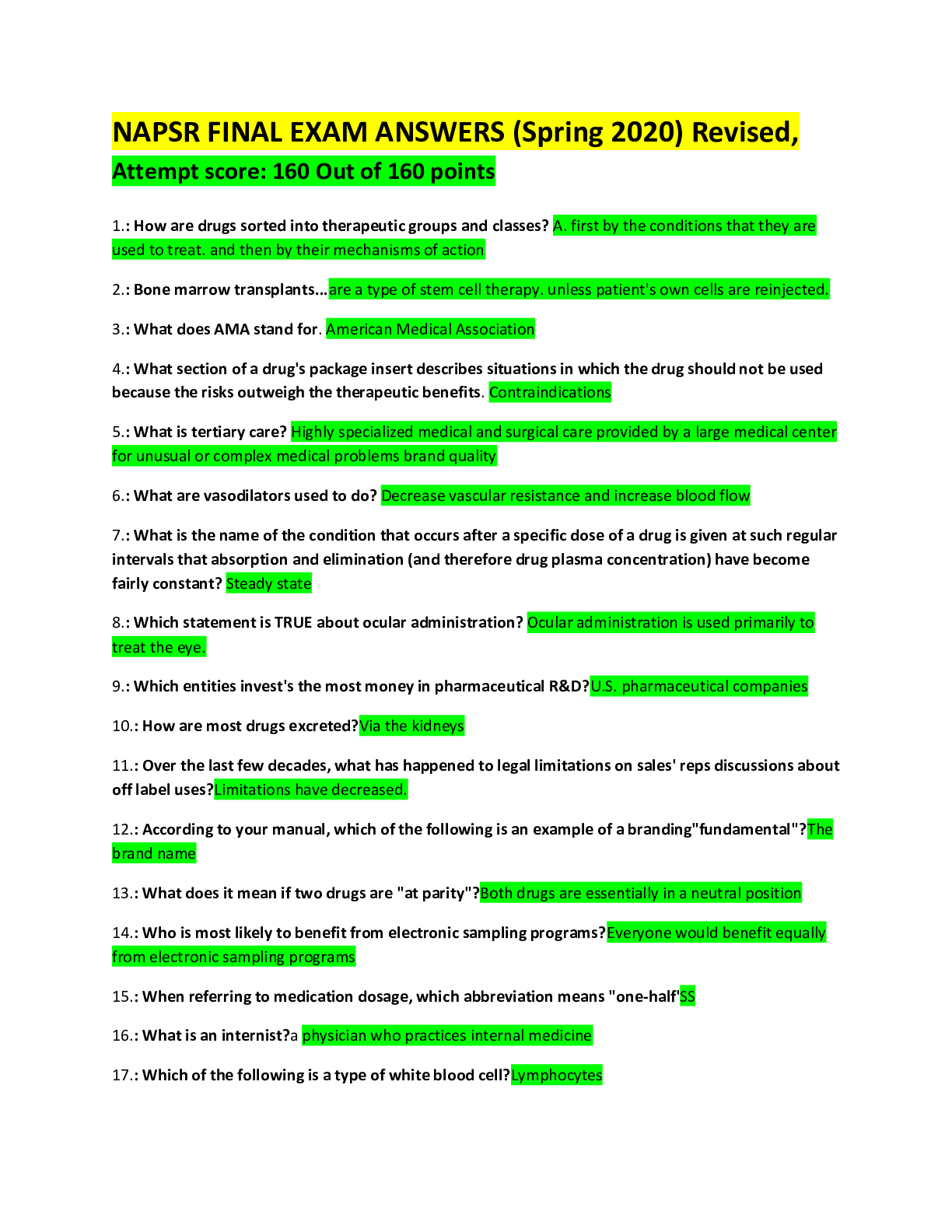

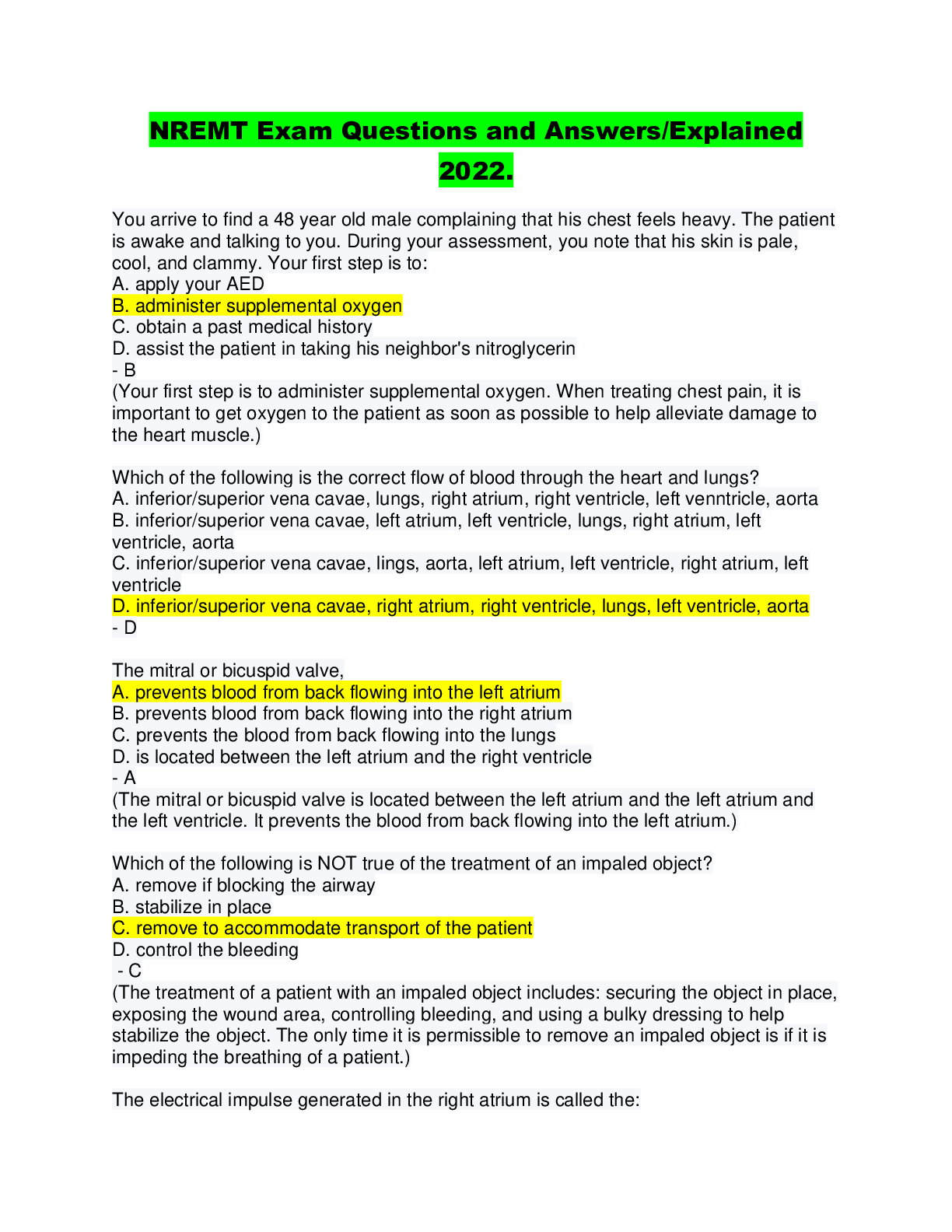
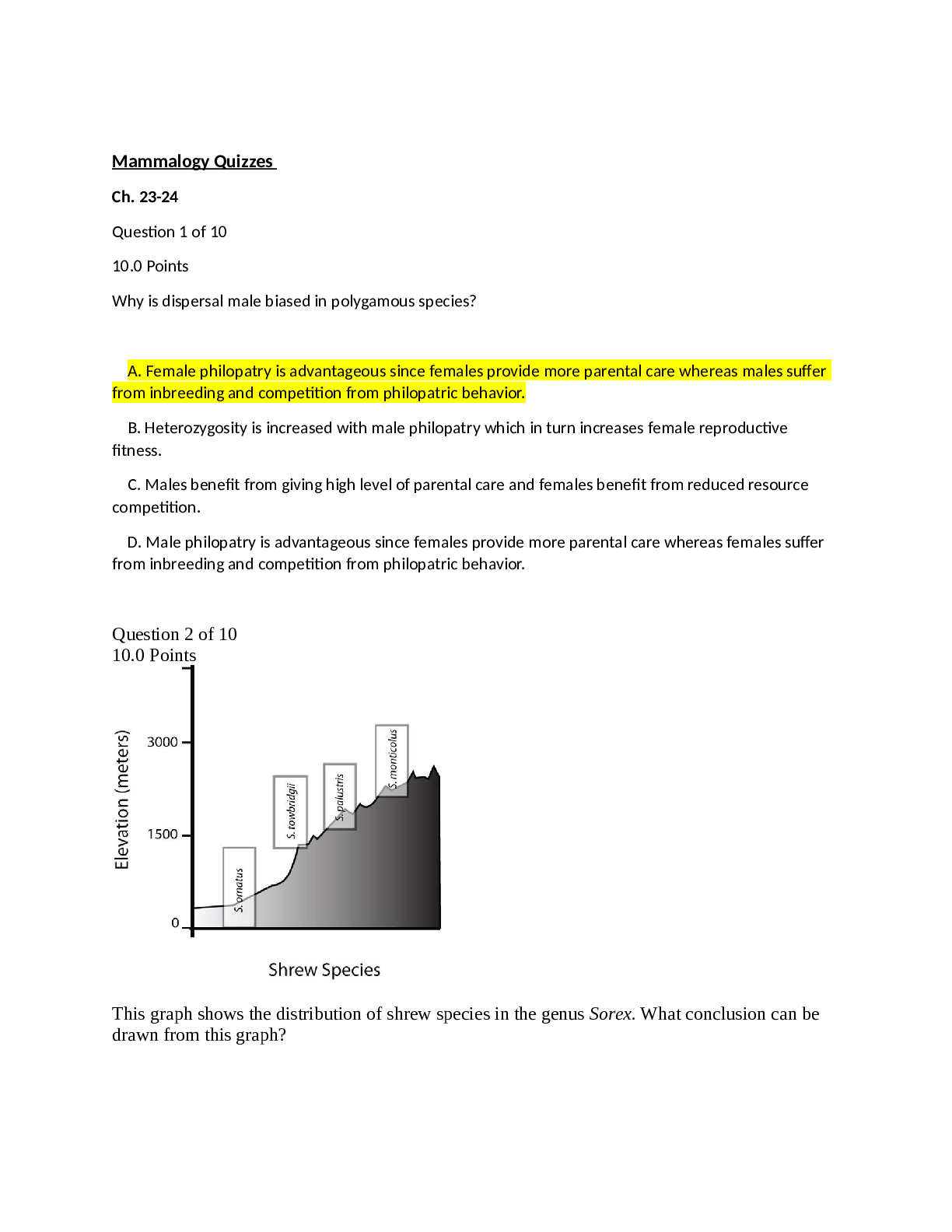
.png)
